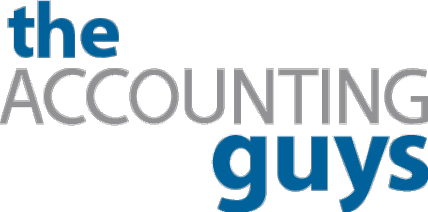September 15th is just around the corner. For most people, that date might not mean much, but for many business owners, September 15th is a source of a great deal of stress. If you filed for an extension on your business tax return in the spring, that date is your new deadline, and it’s approaching quickly. If you still haven’t filed and are feeling overwhelmed by everything involved in getting your business tax return ready, keep reading. The business tax experts here at The Accounting Guys have a few tips that can help you to simplify the process, relieve some of that stress, and get your return filed on time.
Gathering and Organizing Financial Documents
One of the most daunting tasks involved with preparing your taxes is often gathering and organizing all of the right financial documents. In order to file your return accurately, you’ll need a comprehensive record of your company’s income, expenses, credits, and deductions. Here are a few of the key documents you’ll want to gather now so that you can prepare your return quickly:
- P&Ls: Your profit and loss statements, or P&Ls, are one of the most important financial documents for your business tax return. These statements show your company’s revenue and expenses, along with your overall net income for the previous tax year.
- Balance Sheets: Your balance sheets provide a more immediate snapshot of your company’s financial position, including assets, liabilities, and equity.
- Receipts and Invoices: These documents help to support your P&Ls by providing support for the stated income and expenses.
- Bank Statements: While you don’t necessarily need to submit any information that’s included directly on a bank statement, you should ensure your statements are reconciled and accurately reflect your business transactions.
- Payroll Records: If you have even one employee, you’ll need payroll records to account for the wages paid, taxes withheld, and any other expenses related to company payroll.
With the deadline so close, now is the time to gather these documents. You’ll want to have them in order before you start working on your return to save yourself time and reduce the risk of errors on your business tax return.
Get the Right Tax Forms
Different types of businesses require different types of tax forms based on their business structures. It’s important that you get the right type of form for your company, so here’s a quick guide to common business tax forms:
- Sole Proprietorships: If your business is a sole proprietorship, you’ll need to use Schedule C to report income or losses from your business. This would actually be filed alongside your Form 1040 for your personal tax return. This means that, if you filed an extension, you won’t actually need to submit this tax information until October 15th, rather than September 15th.
- Partnerships: Partnerships need to file Form 1065 for the business, as well as issuing a Schedule K-1 to each partner in the business. Partners would file their K-1s alongside their personal tax returns. The deadline this year is September 16th.
- C Corporations: There are a few different types of corporations, and you shouldn’t assume they’ll use the same tax forms. For a C corp, you’ll need to file Form 1120.
- S Corporations: S corps, on the other hand, need to file Form 1120S (a convenient distinction for differentiating it from other corporations’ tax forms). The deadline this year is September 16th.
- Limited Liability Companies: LLCs file different forms based on how the business is taxed. Single-member LLCs usually file as sole proprietorships, while multi-member LLCs file as partnerships or corporations. You’ll need to distinguish which tax structure is applicable to your business, then select the appropriate form as outlined above.
If you’re not certain which tax forms your business needs, contact us here at TAG, and we’ll help you sort it out and ensure you’re not wasting any time on incorrect forms.
Double-Check Credits and Deductions
For a business, claiming all your deductions and credits is essential to minimizing your tax liability and maximizing your bottom line. Once you have all of your documents and tax forms in order, go over your expenses and figure out which ones are deductible. Common business deductions include operating expenses, salaries and wages, depreciation of equipment and vehicles, and business travel.
You should also consider any tax credits for which your company might qualify, like the R&D tax credit or the small business health care credit. Oftentimes, ensuring you get all those credits and deductions is the most complex and stressful part of filing your business return. We encourage you to work with a tax professional to ensure you get all the deductions and credits that you qualify for.
Work with a Business Tax Professional
That leads us to our fourth and final tip: Ultimately, the best way to ensure that your business tax return is filed quickly and accurately, with minimal headaches for you, is to work with a tax expert who’s experienced in filing business tax returns. Here at TAG, we’ve filed countless business tax returns, giving us the knowledge and experience you need to breathe a little easier and get your return filed a little sooner.
Contact our business tax experts in Provo today to schedule a consultation before the deadline on September 15th!

